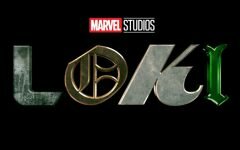Superman’s Pal creates content in “Who Killed Jimmy Olsen?”
In 1971 Jack Kirby began a series of multiple comic titles interwoven into what is still probably the most ambitious undertaking in mainstream comics, the “Fourth World” saga.
Movies and TV based on DC Comics properties are constantly mining it for parts. It even inspired parts of the original “Star Wars” trilogy. The earliest developments of the “Fourth World” like the first appearance of Darkseid sprang from Kirby’s work on a little book called “Superman’s Pal, Jimmy Olsen.” The goofy book about the bowtie-wearing Daily Planet photographer was the unlikely launchpad for some of the grandest concepts to come out of DC.
When the title relaunched last year after a decades-long absence, it seemed history repeated itself in a sense. “Superman’s Pal, Jimmy Olsen” returned in 2019 as a twelve-issue limited series by Matt Fraction (“Hawkeye”, “Fear Itself”) and Steve Lieber (“Superior Foes of Spider-Man”, “Hawkman”) with colors by Nathan Fairbairn (“Scott Pilgrim” Color Editions, “Batman Incorporated”) and letters by Clayton Cowles (“Mister Miracle”, “X-Men”) and the team held nothing back.
The events of this book, which was released in a collected paperback volume on Oct. 28, have surprising ramifications for long-standing power dynamics in Metropolis and the larger DC Universe. They also use this book to play with form and storytelling structure more perhaps than they would ever have gotten away with on a more high-profile book.
Ostensibly, each issue is a series of vignettes, short stories no more than a few pages in length, often humorous strips that build to a punchline. Some of them are drawn in much different styles, as Lieber turns the Olsens into “Family Circus”-like figures in flashback scenes of “Li’l Olsen” and his siblings.
In the narrative present, Lieber acts as a skilled film director who knows his actors and can pull the best possible performance out of them. There’s great nuance in the expressiveness of his characters with his deceptively simple lines.
Fraction’s script is airtight as he weaves together the seemingly disconnected scenes into a generational epic spanning the entire history of Metropolis. It is also a poignant reflection on family and generational wealth, as well as print media in the digital age as Olsen is a video blogger/livestreamer for the struggling Daily Planet.
While Fraction and Lieber may not have created the next Fourth World saga, they are brilliant humorists and have created some of the most formally interesting work to come out of DC’s main line of in-continuity superhero books in years.
Fairbairn’s limited color palette evokes the old comics being riffed on here without being beholden to four colors and Ben Day dot matrices. His choices are also great in keeping the book grounded, and here he does a great service to Lieber.
Lots of comics use so much color that, combined with highly detailed art, can cause a kind of sensory overload in a reader where line artist and color artist are both delivering great work individually but both show off too much to work well together.
I’ve talked a lot about Cowles in other reviews—that he keeps showing up speaks to his prolificity—but it isn’t right to not mention a letterer when I can, so I will say that his choice to mark The End on each vignette with a simple icon of Olsen’s signature bowtie is inspired.
You can find “Superman’s Pal, Jimmy Olsen: Who Killed Jimmy Olsen” in the new trade paperback release available now in bookstores, or read it digitally on comiXology or via subscription to DC Universe.
Blanton Matthews is a Junior at Henderson State,...











